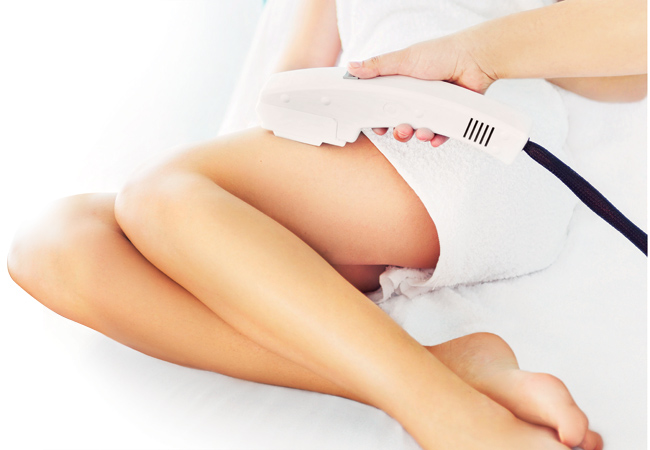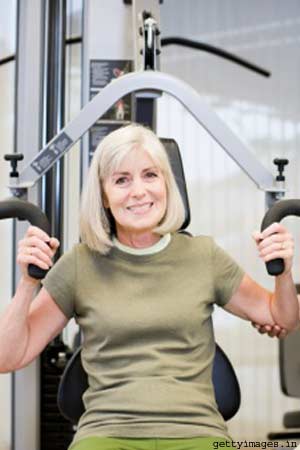12 Pilates Moves That Will Redefine Fitness for You This Year

by guest blogger Brooke Siler, celebrity Pilates instructor, owner of re:AB Pilates Studio and author of the recently launched The Women's Health Big Book of Pilates
What does being fit look and feel like to your innermost informant? Is it limited to shape, tone, and size, or is it based on quality of movement? Is it a product of jogging, spinning, yoga, and weight lifting, or does everyday living play a role?
So much of what we think about fitness has been formed by images alone. We look at bodies and create an idea of it in our heads that doesn't usually scratch the surface. But being fit is about distinctly more than what we look like. Being fit is about adaptability, balance, and feeling great in your body. Sound fitness methods should teach and create movement awareness that you take with you long after the workout ends.
Do your workouts focus on balancing out imbalances in your body? Do they take into consideration the inner workings of your body's functioning? Do they teach you how to move more efficiently and create more awareness of how you move throughout your day? Are you getting smarter and making more intelligent movement choices for yourself? This is where Pilates comes in.
Joe Pilates envisioned fitness as sound movement and internal health. He created his method to strengthen his own body inside and out using a system that fit fitness into daily life organically. With it, your bed becomes an apparatus, your chair is flipped to become a resistance machine, your doorways house tower units with spring bars. This isn't to say that you need the Pilates equipment to be fit, but these apparatuses expedite the acquisition of the strength and balance that are requisite to enjoying a normal, healthy life.
There's a line that permeates healthy fitness circles that states: "It is not the strong that survive, but the adaptable," and while born from woefully incorrect paraphrasing, it's valid nonetheless. An adaptable body and mind are well suited to their surroundings and daily needs.
So what does training for adaptability actually look like? The first answer would be that it completely depends on what you are training to be fit for: A marathoner or furniture mover will have different training needs from an office worker. But there are some things we can agree upon across the board: Sitting, standing, walking, breathing, and digesting are a part of everyone's daily repertoire. Each of these acts requires flexibility and strength to be performed well.
So what if we began to think of fitness as adapting our bodies to be able to best perform the actions of everyday life with the greatest efficiency and least risk of injury? Would this change the way you look at your current fitness regime? The Pilates system was designed with balancing strength and flexibility in mind. By creating balanced muscles and a flexible spine, Joe Pilates sought to reverse the age clock and eliminate pain and injury from your physical vocabulary. He was most interested in the movements of the spine, and Pilates movements in general are meant to parallel the natural movements of life: rolling up and out of bed, rolling down to pick up a pen, twisting to reach behind you, lengthening up to reach the item on the top shelf, to name a few.
Since our spines naturally move in only so many ways, what if you thought of your workouts as being "directional" as well as physical? Your spine moves through four basic directions and then combinations thereof. Those directions are flexion, extension, side flexion, and rotation. Plus, every Pilates move begins with "vertical extension" or a lengthening of the spine to create support and to honor the internal workings of your body. Chronic neck aches and back pains begin when not all the directions are being championed by your fitness routines.
The following are 12 no-equipment-needed Pilates moves that, when put together in almost any order you like, will serve to move your spine in all directions daily. If there are a couple of directions you find you move in more than the others (usually the ones that are the most challenging for you), simply repeat them--or choose ones you prefer from the more than 263 Pilates moves in The Women's Health Big Book of Pilates. Either way, when suiting up for your next fitness endeavor think about your divine spine and the directions that need nurturing.
Forward Bending (flexion)
- Lying--Roll Back then Roll Up, 3 to 5 times
- Sitting--Spine Stretch, 3 to 5 times
- Standing--Push-Up Prep, 3 to 5 times

Back Bending (lengthening to extension)
- Lying--Swimming, 50 breaths

- Sitting--Neck Pull, 3 to 5 times
- Standing--Single Leg Balances 3 sets
- Lying--Double Leg Lifts, 3 to 5 times
- Sitting--Side Bend or Mermaid, 3 sets


- Standing--Side Bends (without weights), 3 sets
- Lying--Corkscrew (three different versions of varying levels), 3 to 4 sets
- Sitting--Saw, 3 sets



- Standing--Butterfly Twist, 2 sets

Brooke Siler, world-renowned Pilates guru and celebrity trainer, continues to enlighten readers by bringing the essential guide to complete mind/body fitness with her new book, The Women's Health Big Book of Pilates. She is a New York Times best-selling author and a certified Pilates instructor--one of the few to have trained under the tutelage of Joseph Pilates' protégée Romana Kryzanowska--with 20 years of teaching experience. As the founder and head teacher of the re:AB Pilates Teacher Education program, Brooke now trains the next generation of Pilates teachers.
-
What Is The Best Exercise To Lose Belly Fat- Its Action Time
Workouts to lose or reduce belly fat are something that many people ar
-
Get A Weight Loss Calculator To Measure The Weight Loss
Ways to Weight loss The best way to fight against obesity is the wei
-
This Ruins Most Diets
Just a few weeks ago I received a message from a frustrated individual
-
Your Teen and Eating Disorders
As unfortunate as it is, you need to think about your teen and eati
-
How To Lose 7 Pounds In 7 Days Successfully
For those those who want to realize how to lose 7 pounds in 7 days; ar
-
Change To Fat-Burning Foods To Help Lose Your Stomach Fat
There are some simple actions we can tak
- DON'T MISS
- Beat the Odds and Release Weight for Good with Positive Changes
- Weigh in With Jen: Part 2 – How I Started My Zillionth Diet
- 7 things to do before starting a weight-loss program
- The Secret To Weight Loss Success
- The Real Flu Danger – Feeding a Fever
- The Real Truth Behind Weight Loss Supplements
- Getting the Lowdown on Your Metabolism
- What Are The Best Diets That Increase Metabolism?
- A Good Way To Lose Weight Quickly
- Emphasizing Health vs. Weight for Body-Positive Thinking




